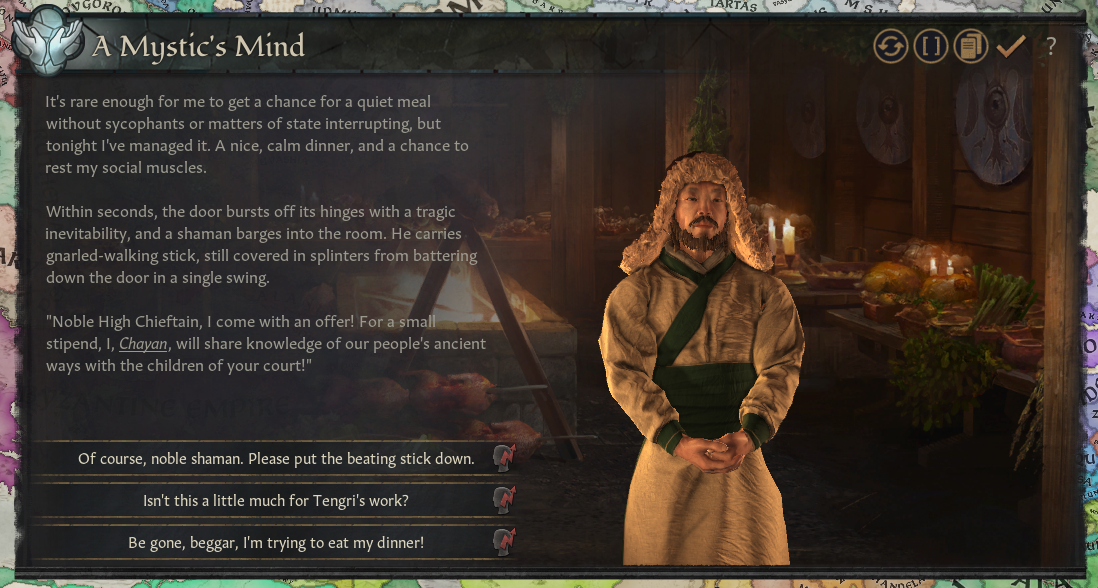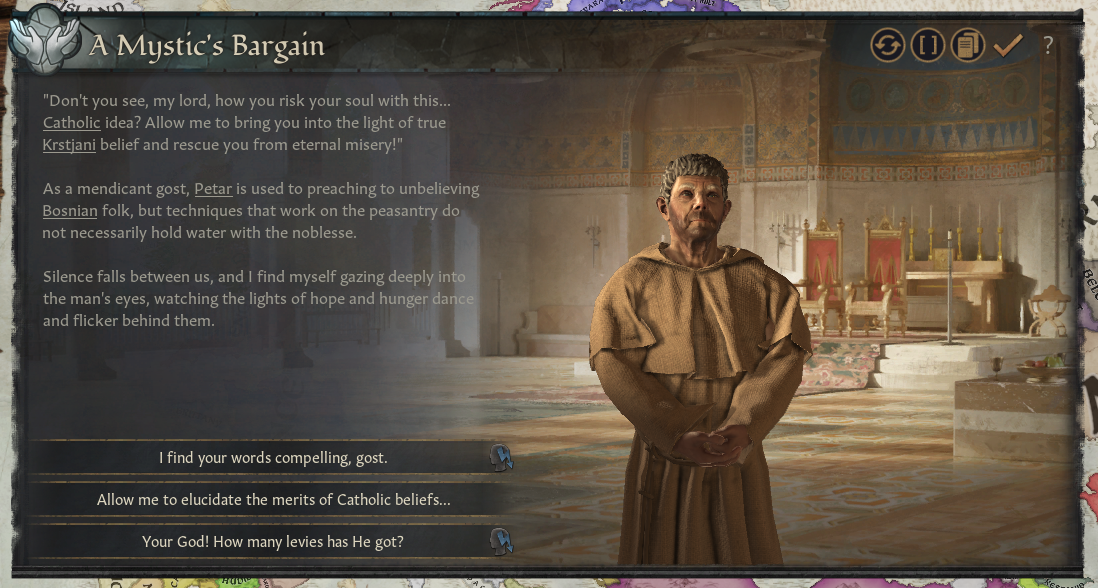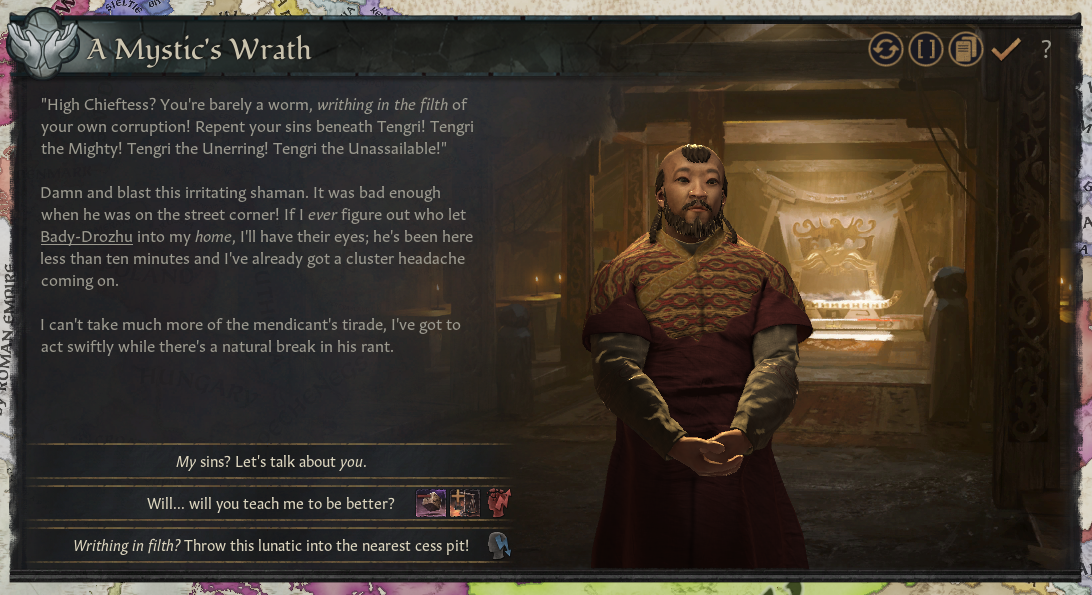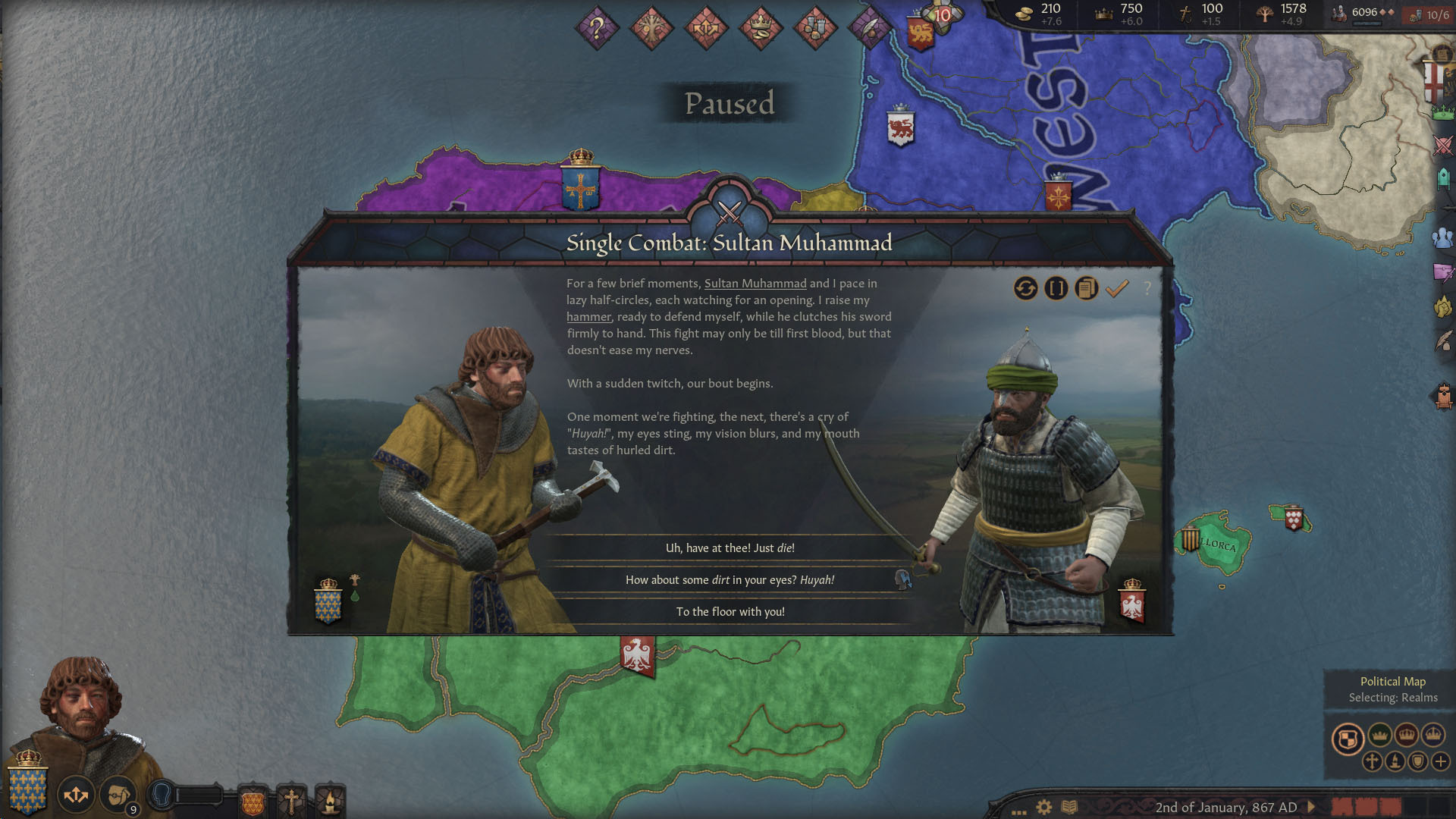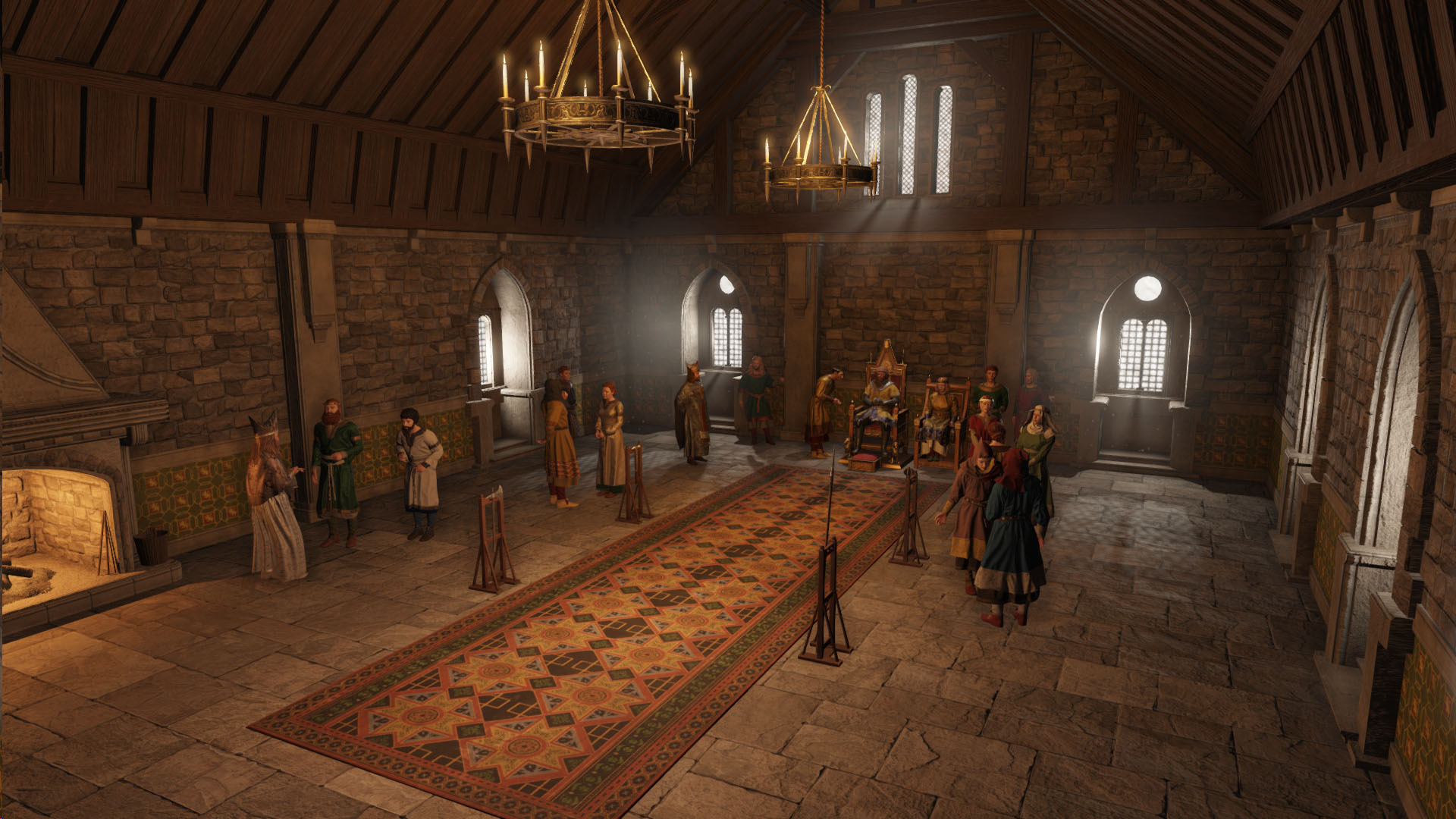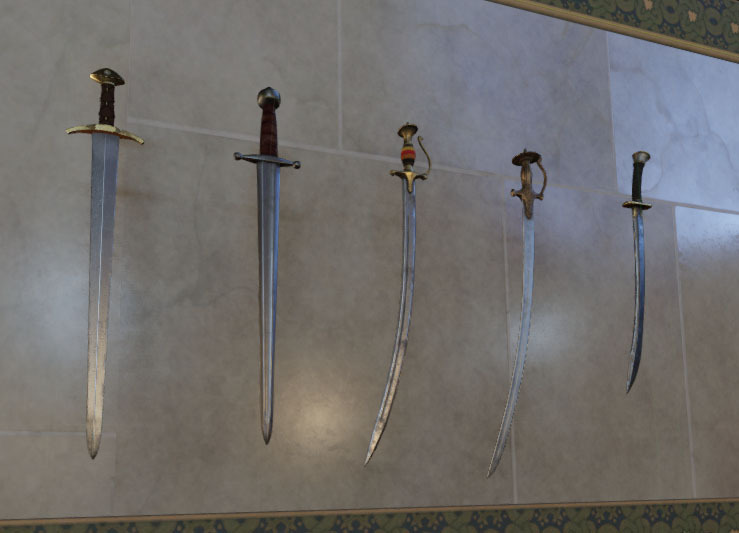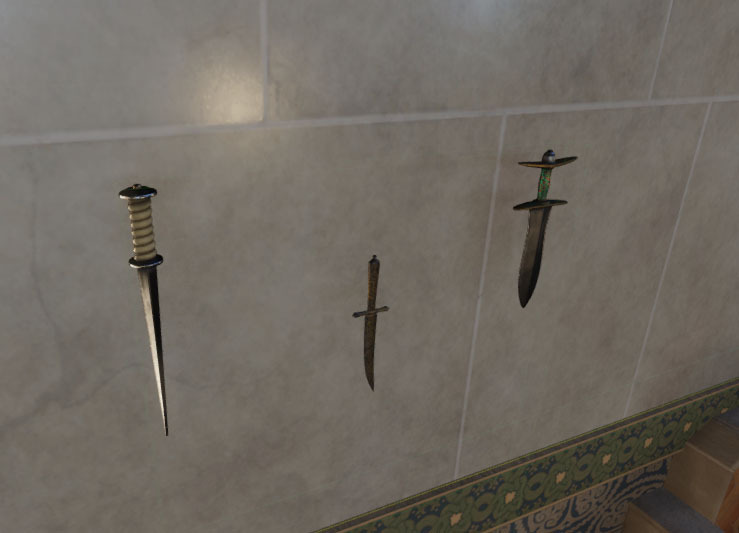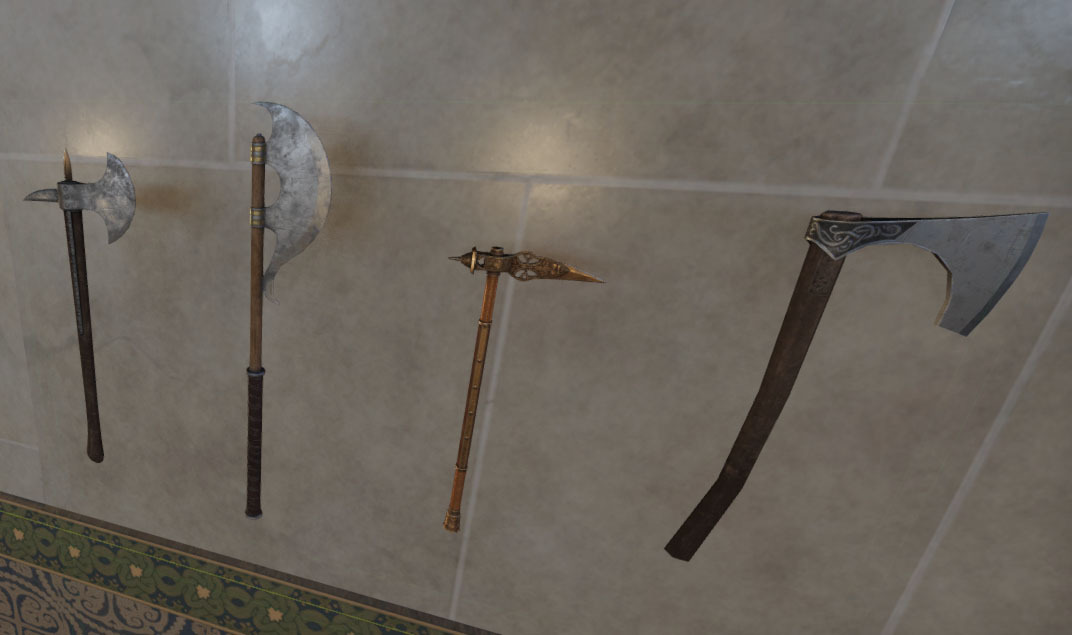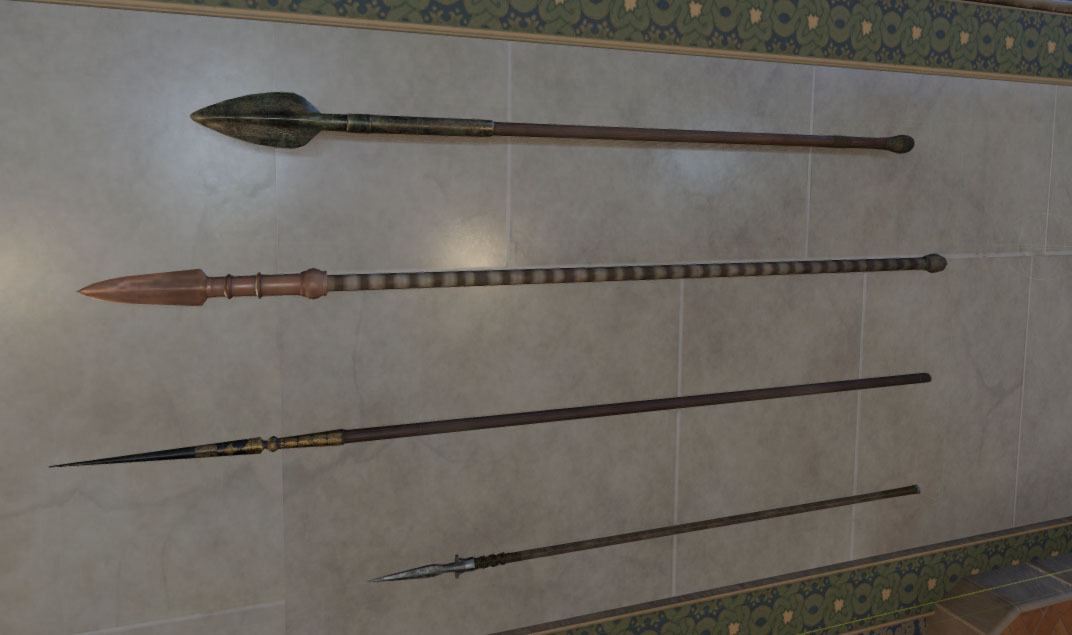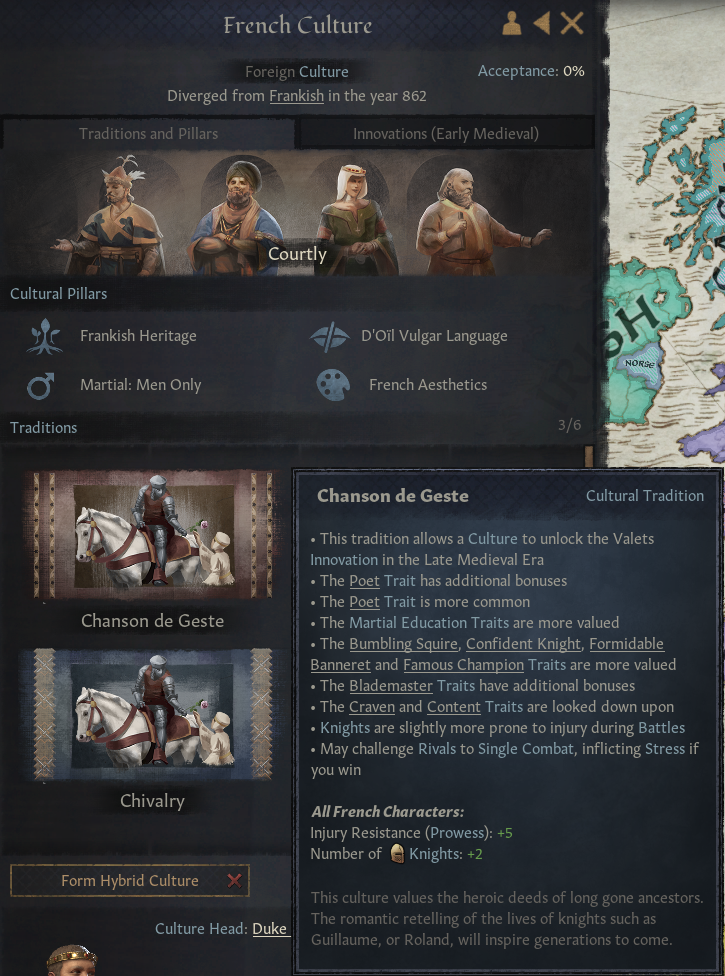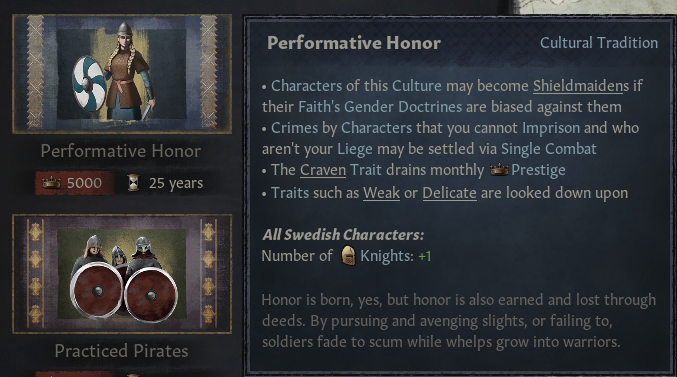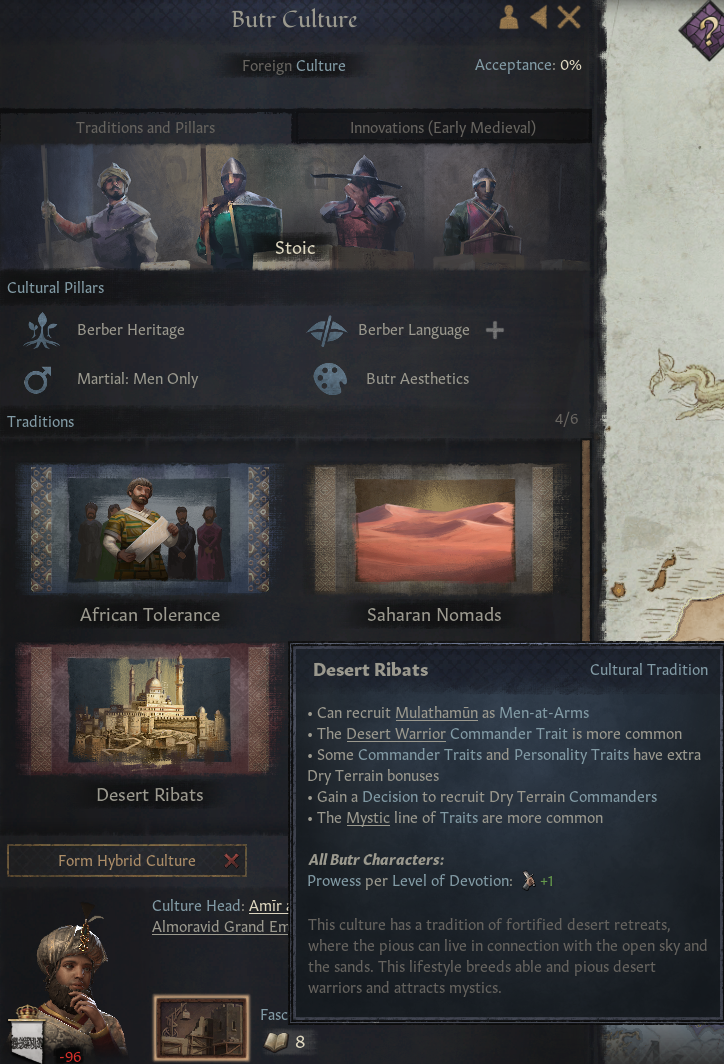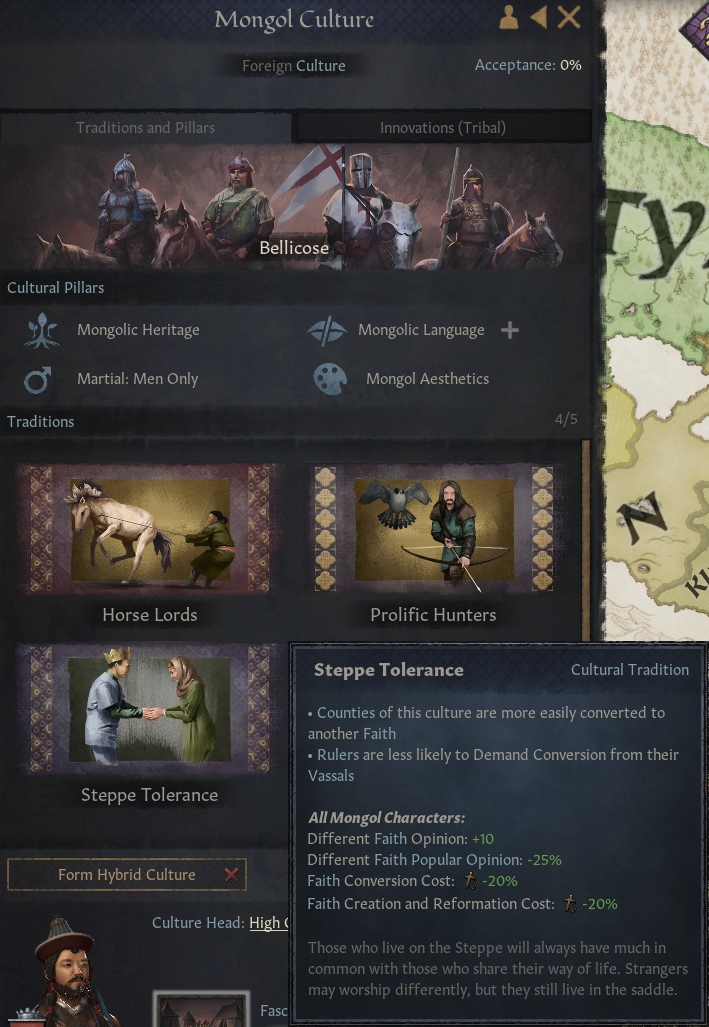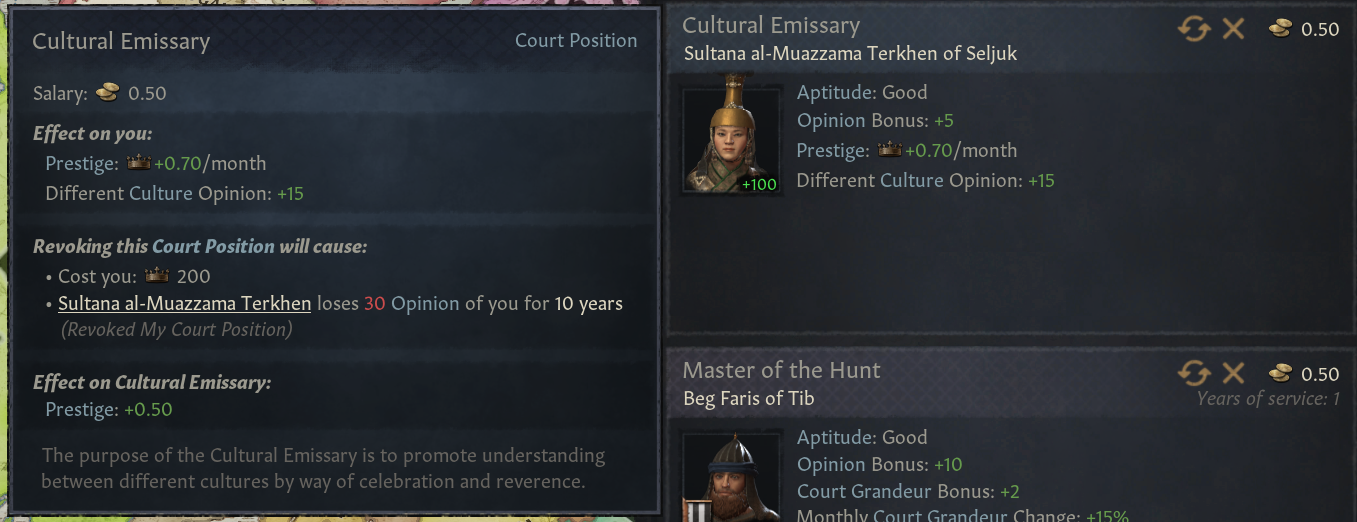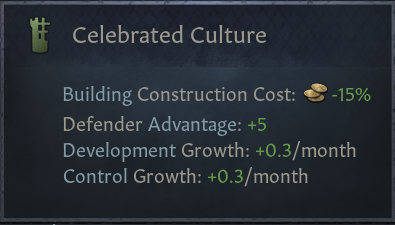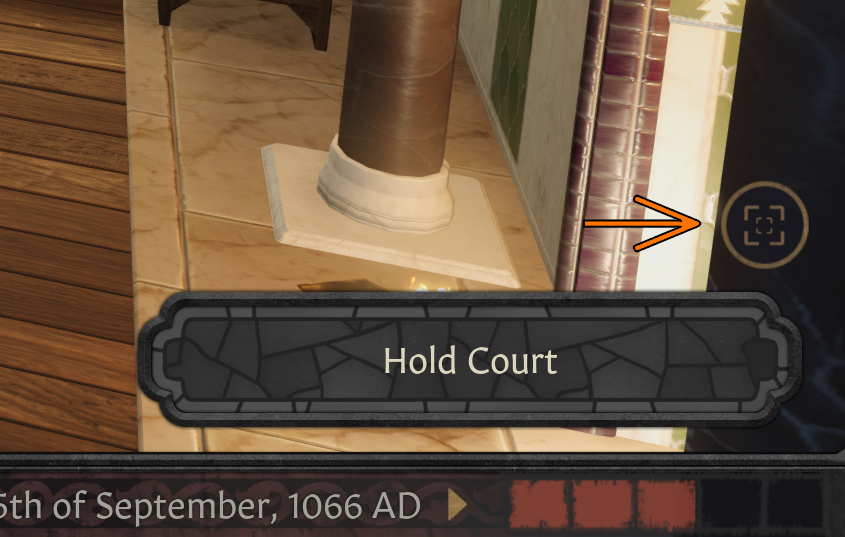
Jan 11, 2022
Crusader Kings III - Nicou12313
Hello and welcome to Dev Diary 85 for Crusader Kings III!
This is Areysak, Content Designer (some of you might remember me from Imperator).
As the release date draws nearer and nearer, I’m here to talk to you about Artifacts.
Again?! - you are probably thinking.
YES, because artifacts still have more to offer! Let’s take a closer look.
► Read our Dev Diary #85 - An Artifact's Life
💡 Enjoy the FAQ Royal Court and read all there is to learn about our upcoming Expansion

First, you probably know by now that artifacts are an investment that requires time and gold. An inspired character makes them for you, but how can you make them feel like they are really yours?
… Why not inscribe your name on them!
While an inspired character is hard at work making a fancy artifact for you, they might ask for your input on dedications: do you want this artifact to preserve the glory of your name for posterity? Or maybe you want to impress your lover, memorialize your deceased soulmate, or even make the artifact testify to your faith. A dedication is forever!
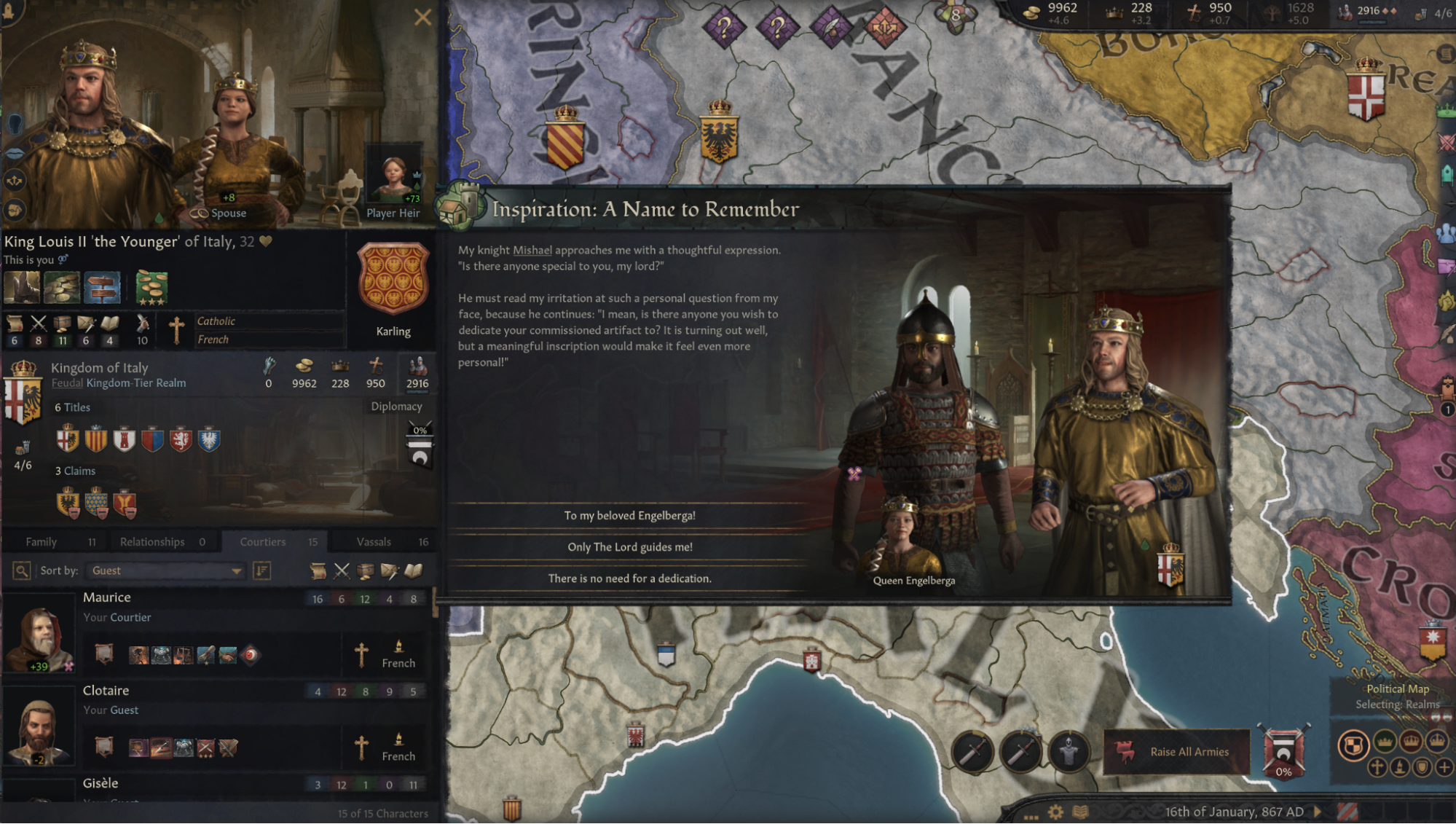
Event to add dedications to artifacts in the making
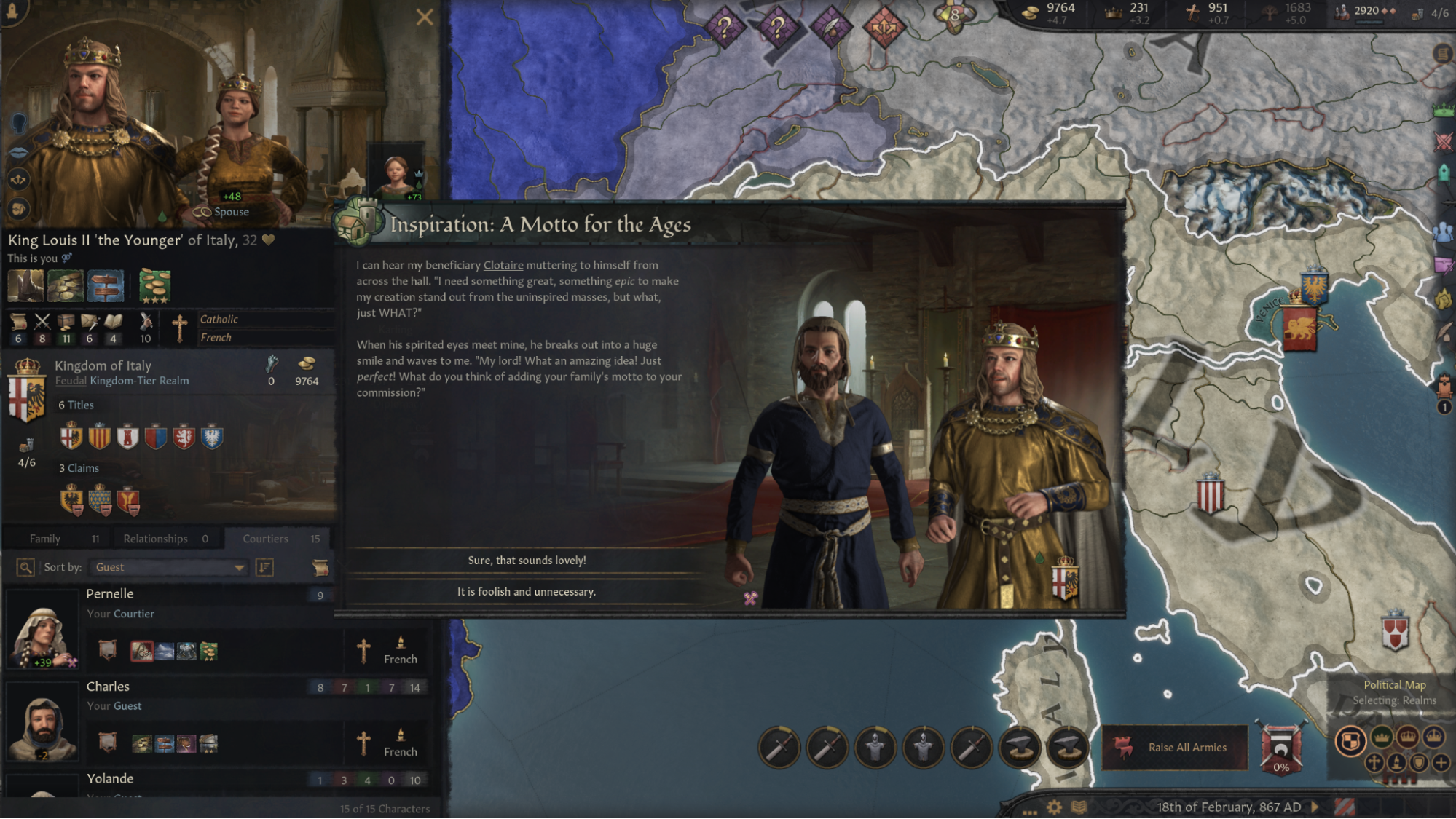
Event to add dedications to artifacts in the making
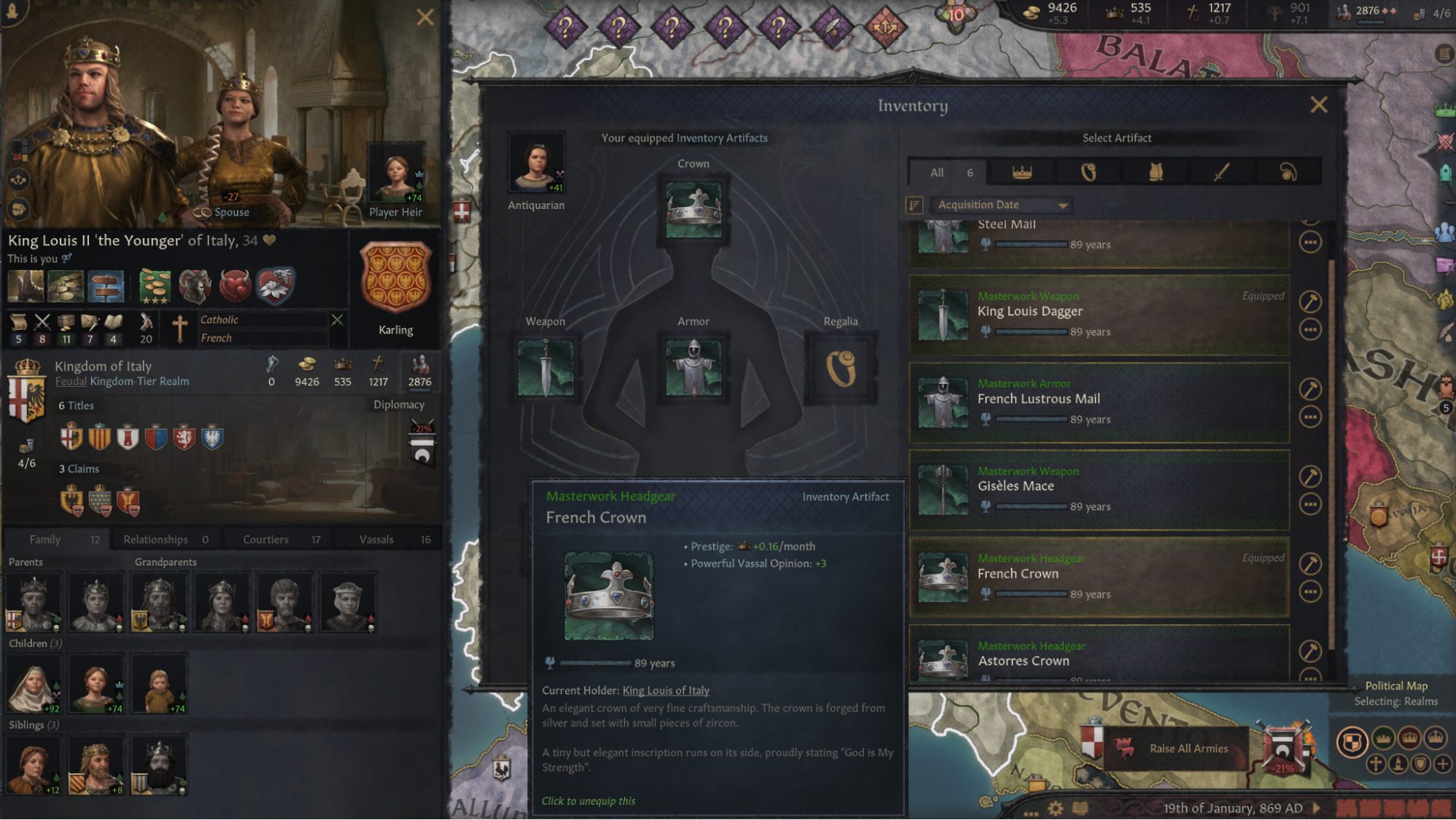
Dedicated artifact
Occasionally, an inspired character might also seek your input on what functionalities you expect out of their artifact. Should your armor shine so bright that all your knights are inspired to greatness on the battlefield whenever you lead them, or should it favor practicality and make you more effective in mountain areas? You can choose an angle for your artifact that will make certain modifiers more likely to appear at creation.

Event to set the artifact’s focus
On a separate topic, artifacts don’t exist in a void, but are living items in a living world, meant to be used, exchanged, stolen… and damaged. With use and time, an artifact’s durability lowers. What happens when your grandpa’s armor gets rusty, or your sword loses its edge? You need an expert! The Antiquarian at your court specializes not only in maintaining but also in repairing your artifacts. With just a couple of clicks (and some gold) your artifacts will be as good as new!

Repair interface
Sometimes, however, just repairing an artifact doesn’t really strike your fancy… Grandpa’s armor has seen its fair share of adventures, but it’s ancient, and you have newer and cooler stuff to wear! Before you hit a flea market to get rid of it (and possibly have Grandpa curse you from his grave), you have another choice: reforge! By reforging an inventory artifact, you change it into a pedestal artifact to expose in your court. Of course, its modifiers will change accordingly - wearing armor might make you tougher to kill, but it will hardly be of any help if it stays on a stand by your throne! On the other hand, your courtiers might be impressed by its fine decoration.
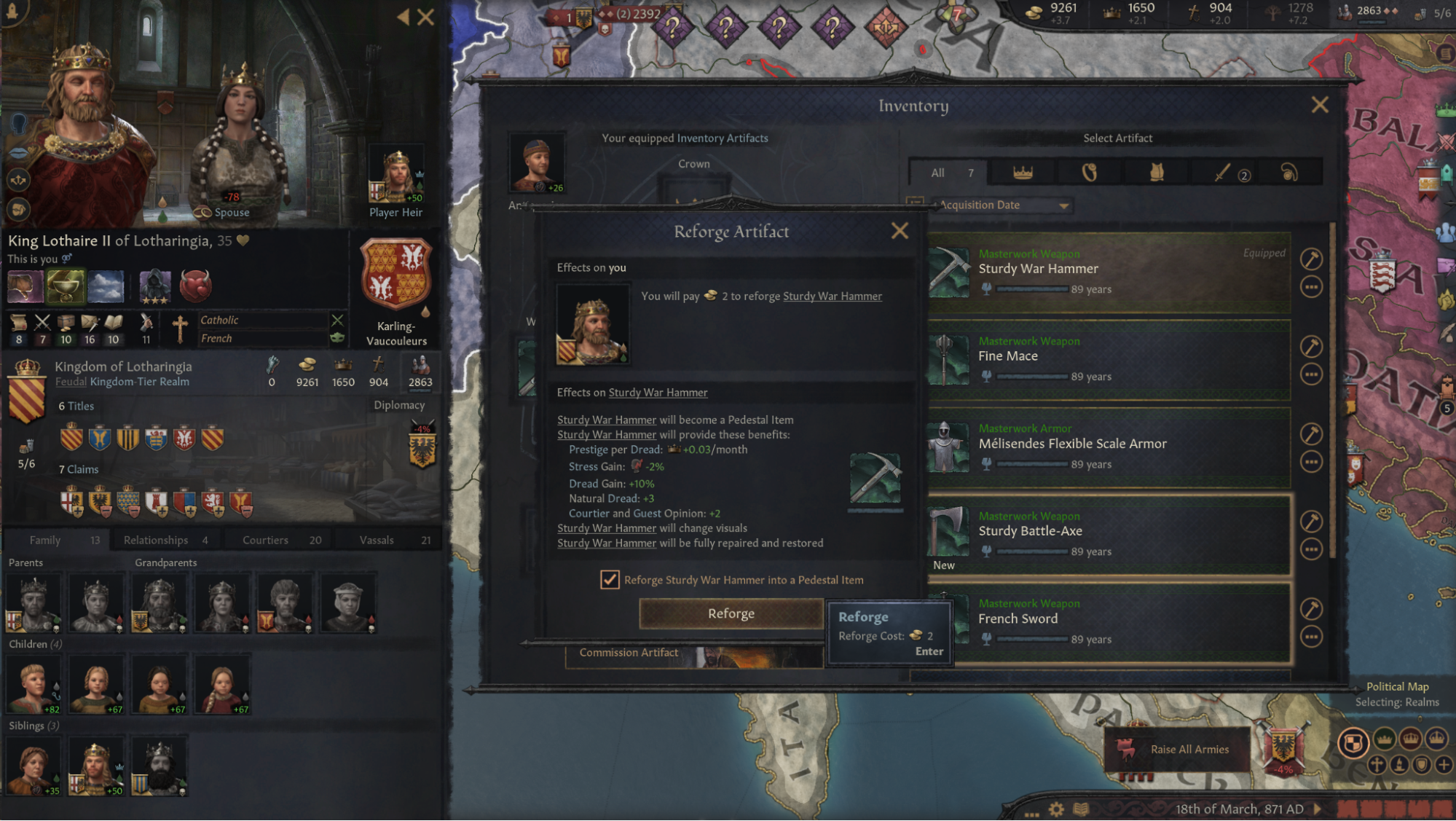
Reforge interface

Reforged armor

Reforged weapon
In some cases, however, you might not care enough about an artifact to repair or reforge it… When artifacts reach 0 durability they get destroyed and disappear from the game. Before that happens, however, other possibilities might open up for you through events. Perhaps a scrap collector will offer to buy it in exchange for some gold (don’t expect too much, though, they collect scraps, not riches!), or your antiquarian might find a way to repurpose it.
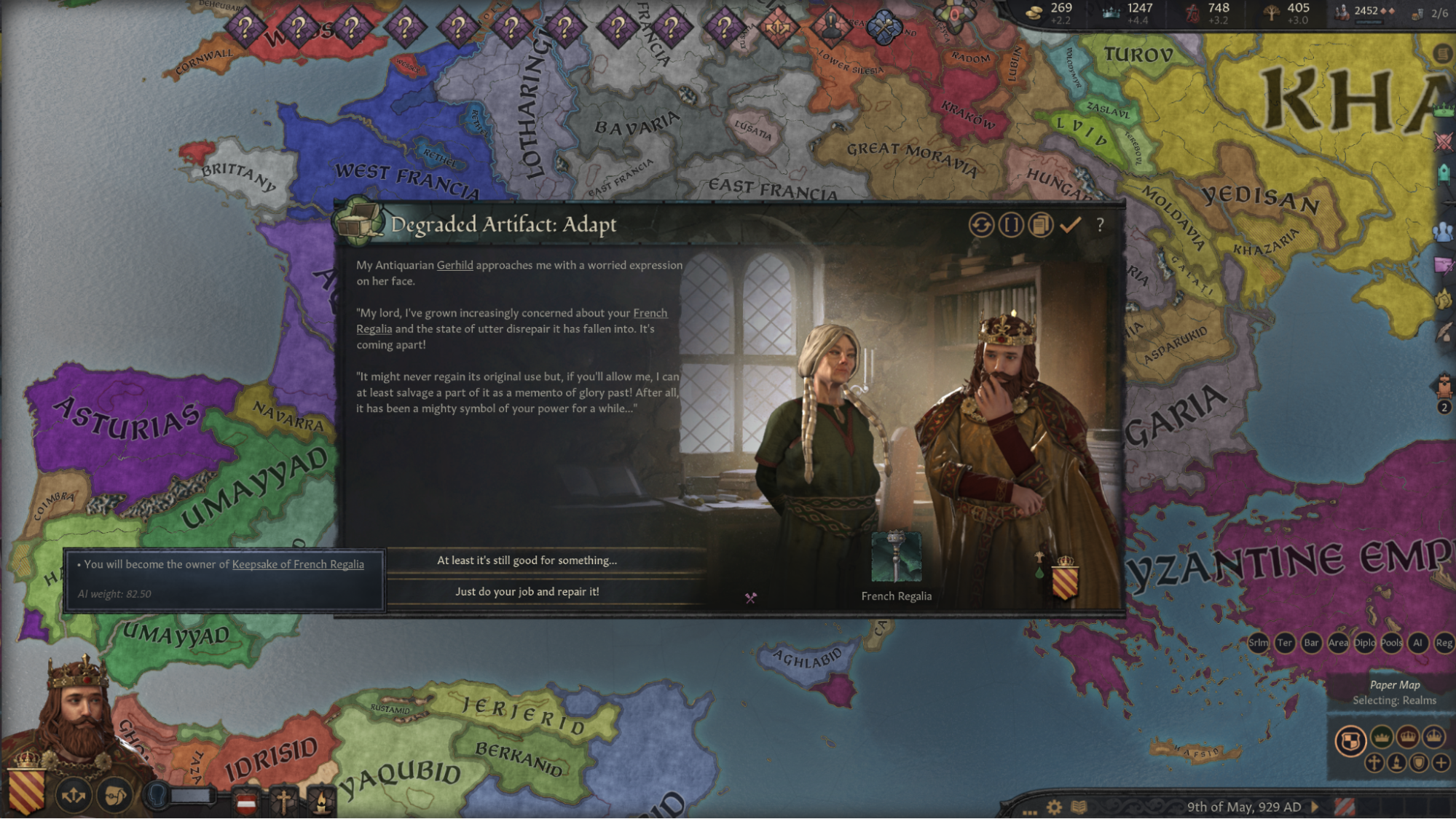
Event for decaying artifacts
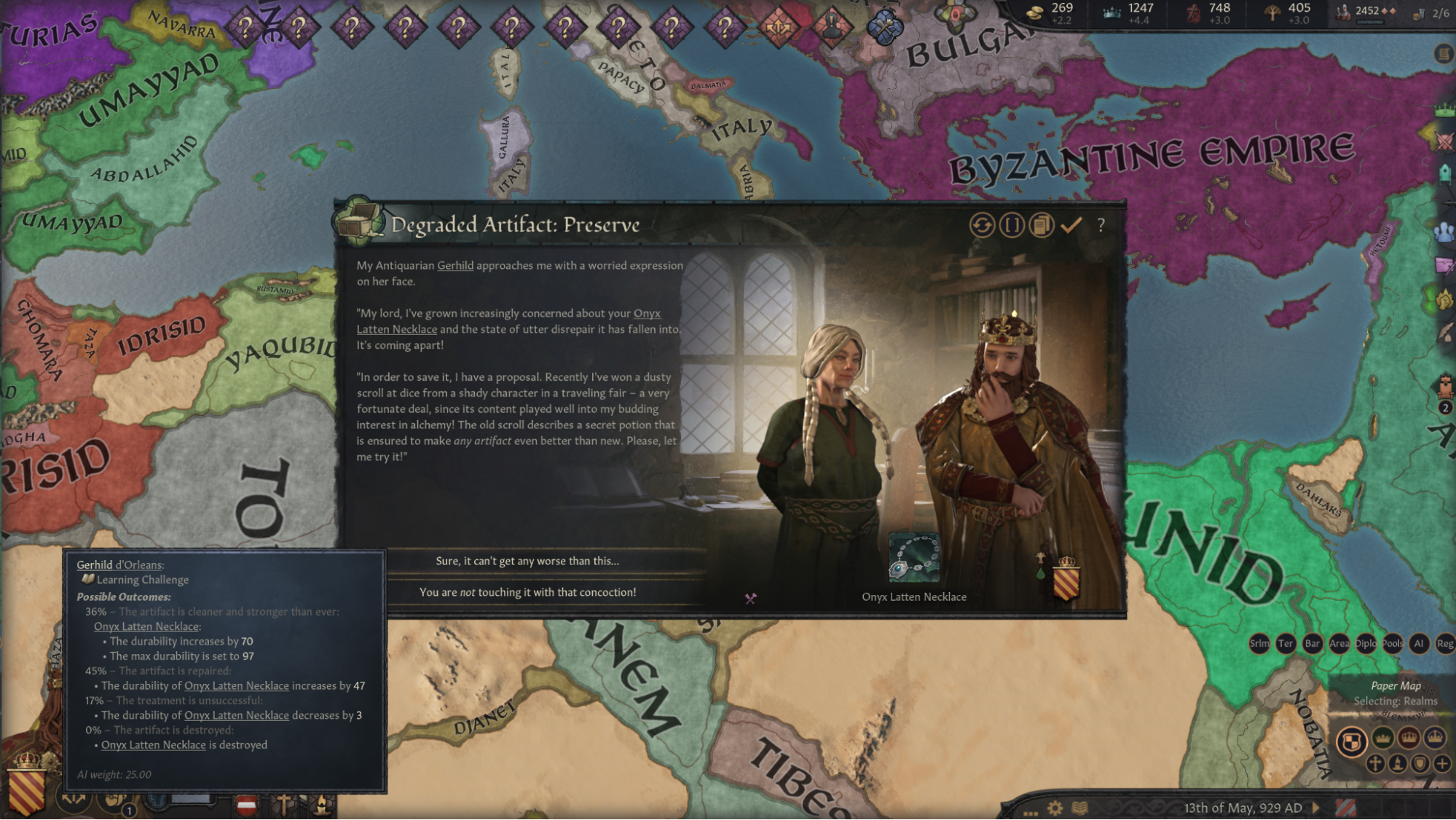
Event for decaying artifacts
Finally, some artifacts gain a reputation or a story through time! The sword of an often-triumphant general will be remembered as a fearsome weapon, while the crown that sat on the heads of your dynastic predecessors for generations will be recognized as a symbol of your people. But be careful, because if either you or your artifact gain an ominous reputation, your artifact might be known as a cursed item!
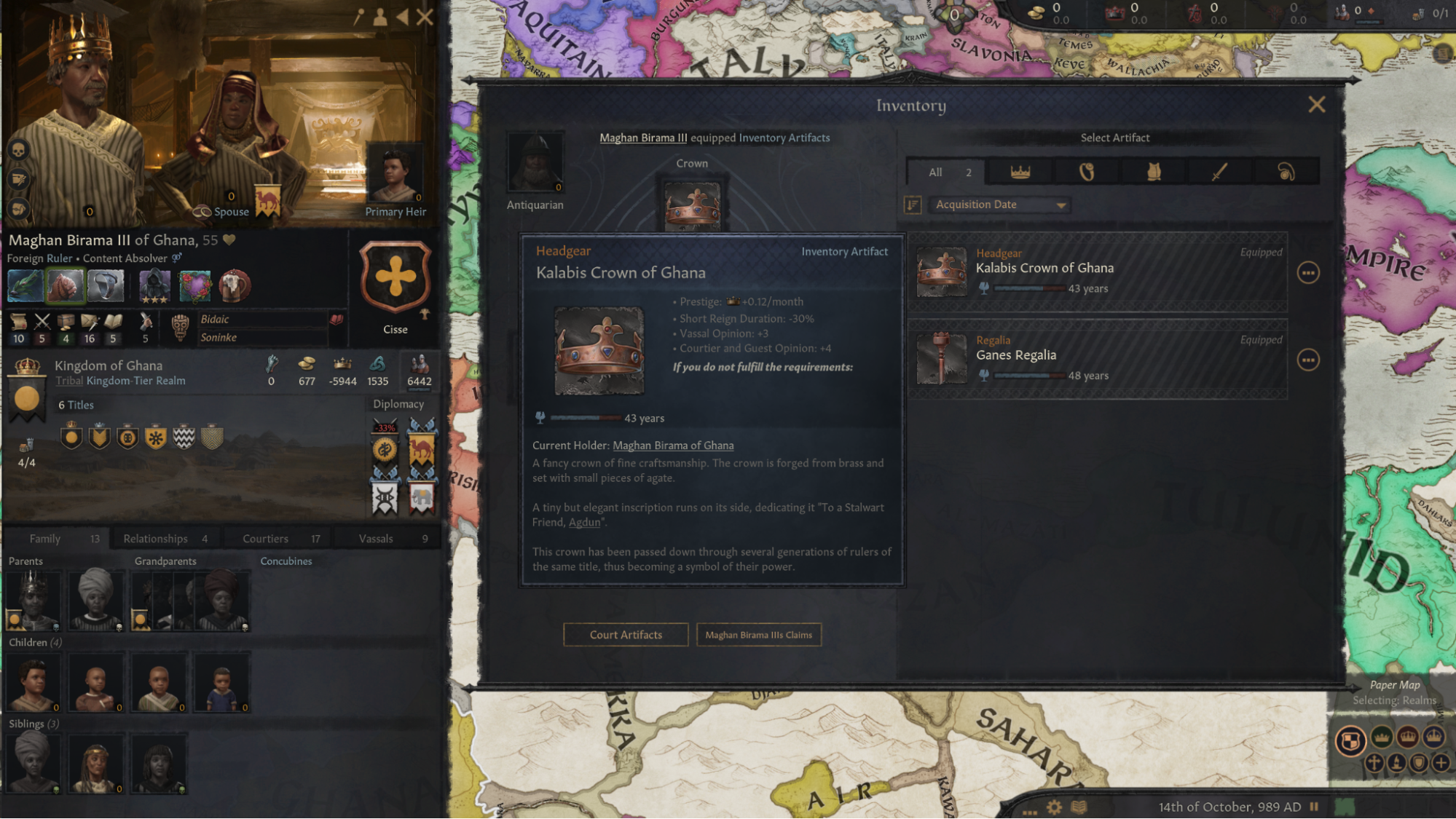
Crown with a reputation
Event from an artifact's life
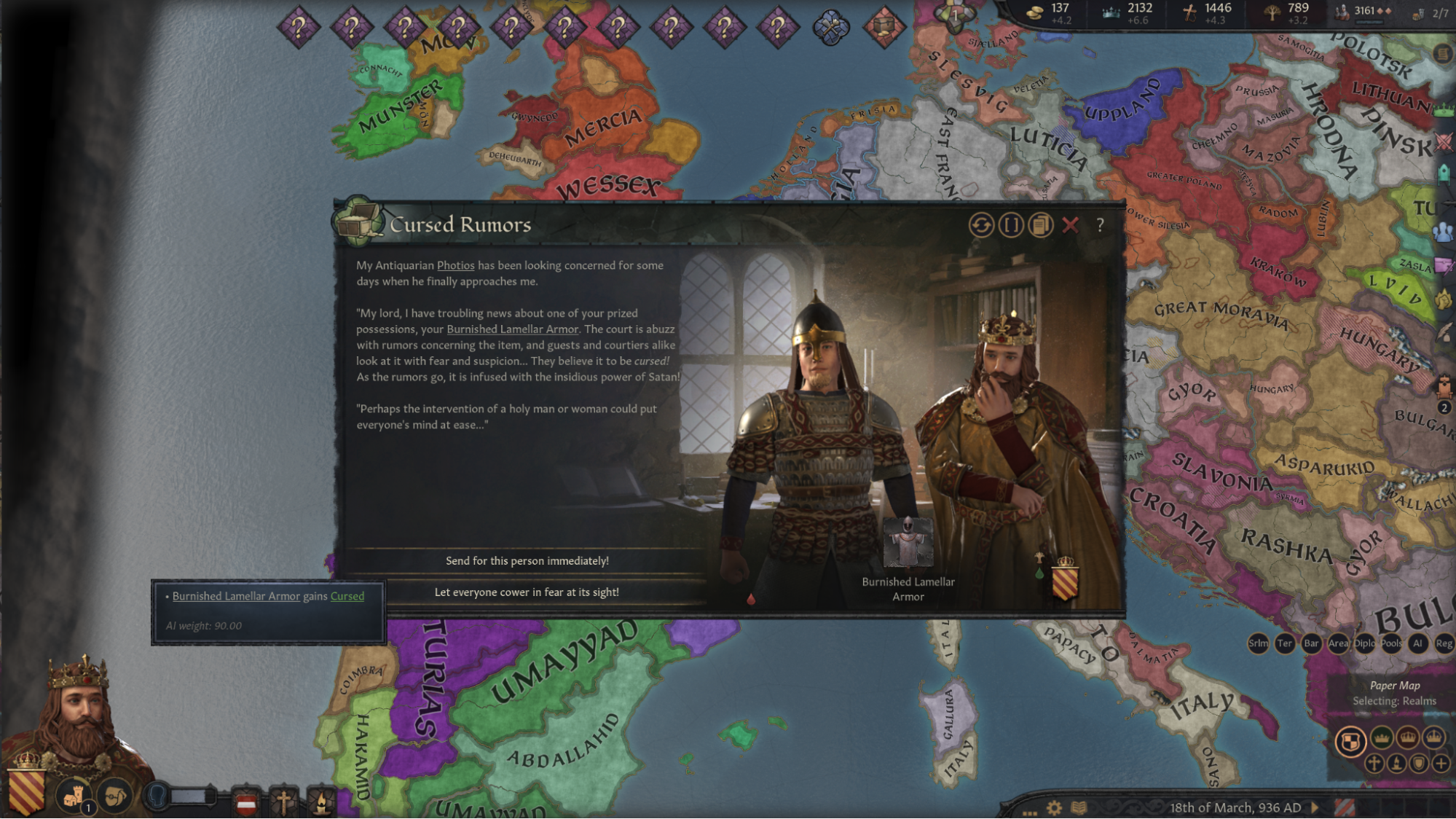
Armor gains a reputation
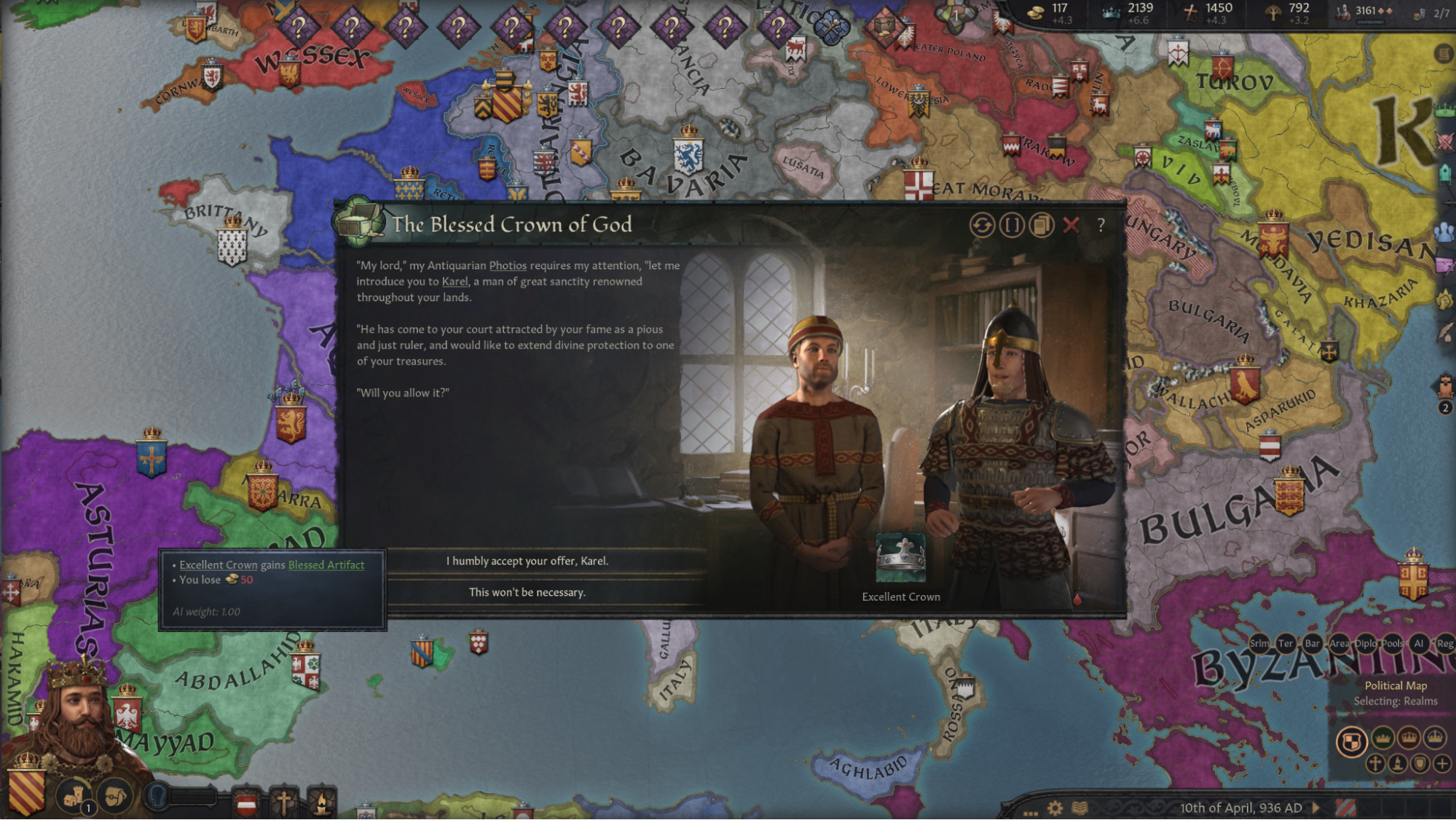
An artifact can gain a reputation
That’s it for today! I hope you enjoyed this DD, and are looking forward to next month’s release as much as we are!

This is Areysak, Content Designer (some of you might remember me from Imperator).
As the release date draws nearer and nearer, I’m here to talk to you about Artifacts.
Again?! - you are probably thinking.
YES, because artifacts still have more to offer! Let’s take a closer look.
► Read our Dev Diary #85 - An Artifact's Life
💡 Enjoy the FAQ Royal Court and read all there is to learn about our upcoming Expansion

First, you probably know by now that artifacts are an investment that requires time and gold. An inspired character makes them for you, but how can you make them feel like they are really yours?
… Why not inscribe your name on them!
While an inspired character is hard at work making a fancy artifact for you, they might ask for your input on dedications: do you want this artifact to preserve the glory of your name for posterity? Or maybe you want to impress your lover, memorialize your deceased soulmate, or even make the artifact testify to your faith. A dedication is forever!

Event to add dedications to artifacts in the making

Event to add dedications to artifacts in the making

Dedicated artifact
Occasionally, an inspired character might also seek your input on what functionalities you expect out of their artifact. Should your armor shine so bright that all your knights are inspired to greatness on the battlefield whenever you lead them, or should it favor practicality and make you more effective in mountain areas? You can choose an angle for your artifact that will make certain modifiers more likely to appear at creation.

Event to set the artifact’s focus
On a separate topic, artifacts don’t exist in a void, but are living items in a living world, meant to be used, exchanged, stolen… and damaged. With use and time, an artifact’s durability lowers. What happens when your grandpa’s armor gets rusty, or your sword loses its edge? You need an expert! The Antiquarian at your court specializes not only in maintaining but also in repairing your artifacts. With just a couple of clicks (and some gold) your artifacts will be as good as new!

Repair interface
Sometimes, however, just repairing an artifact doesn’t really strike your fancy… Grandpa’s armor has seen its fair share of adventures, but it’s ancient, and you have newer and cooler stuff to wear! Before you hit a flea market to get rid of it (and possibly have Grandpa curse you from his grave), you have another choice: reforge! By reforging an inventory artifact, you change it into a pedestal artifact to expose in your court. Of course, its modifiers will change accordingly - wearing armor might make you tougher to kill, but it will hardly be of any help if it stays on a stand by your throne! On the other hand, your courtiers might be impressed by its fine decoration.

Reforge interface

Reforged armor

Reforged weapon
In some cases, however, you might not care enough about an artifact to repair or reforge it… When artifacts reach 0 durability they get destroyed and disappear from the game. Before that happens, however, other possibilities might open up for you through events. Perhaps a scrap collector will offer to buy it in exchange for some gold (don’t expect too much, though, they collect scraps, not riches!), or your antiquarian might find a way to repurpose it.

Event for decaying artifacts

Event for decaying artifacts
Finally, some artifacts gain a reputation or a story through time! The sword of an often-triumphant general will be remembered as a fearsome weapon, while the crown that sat on the heads of your dynastic predecessors for generations will be recognized as a symbol of your people. But be careful, because if either you or your artifact gain an ominous reputation, your artifact might be known as a cursed item!

Crown with a reputation
Event from an artifact's life

Armor gains a reputation

An artifact can gain a reputation
That’s it for today! I hope you enjoyed this DD, and are looking forward to next month’s release as much as we are!






